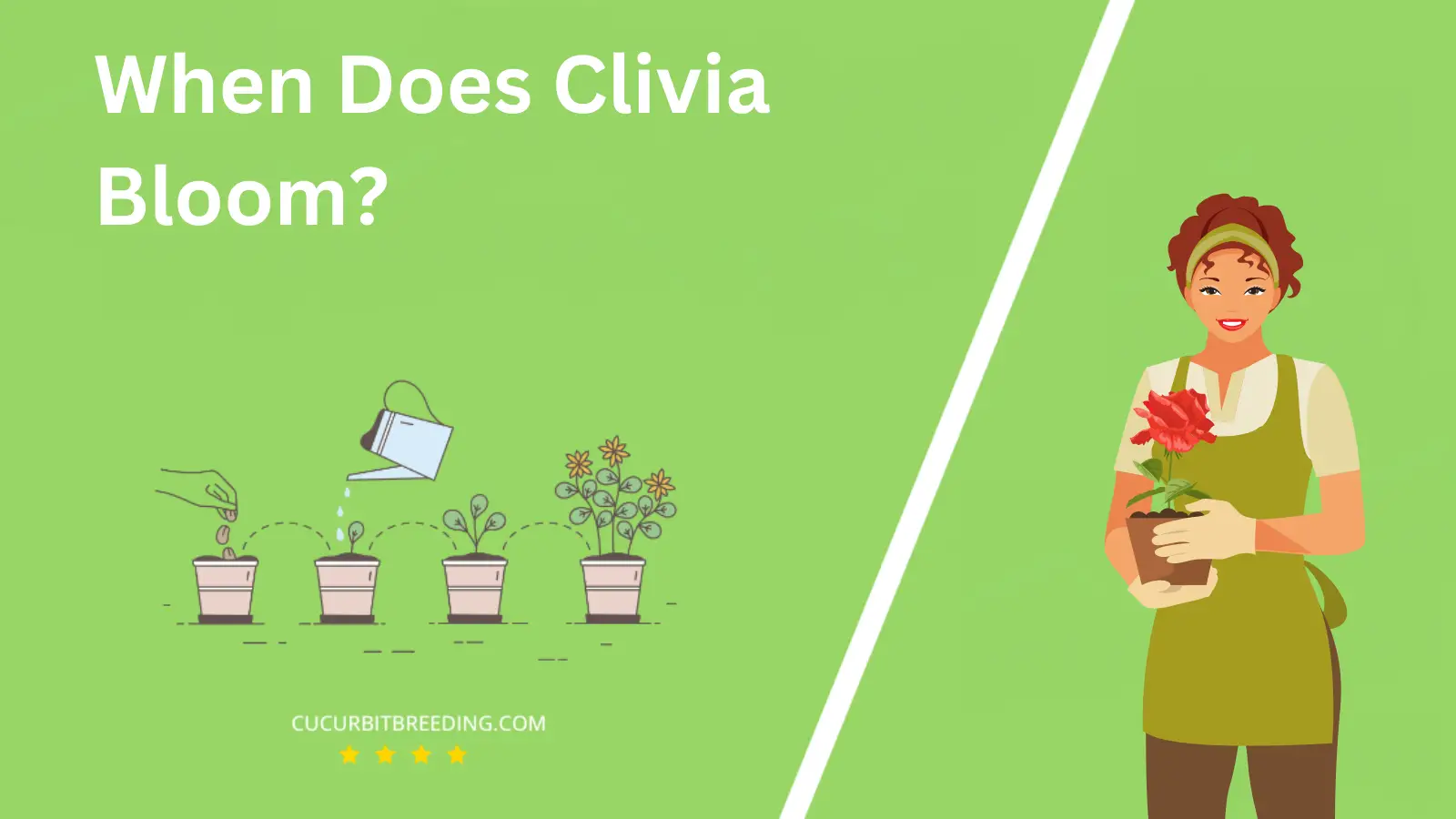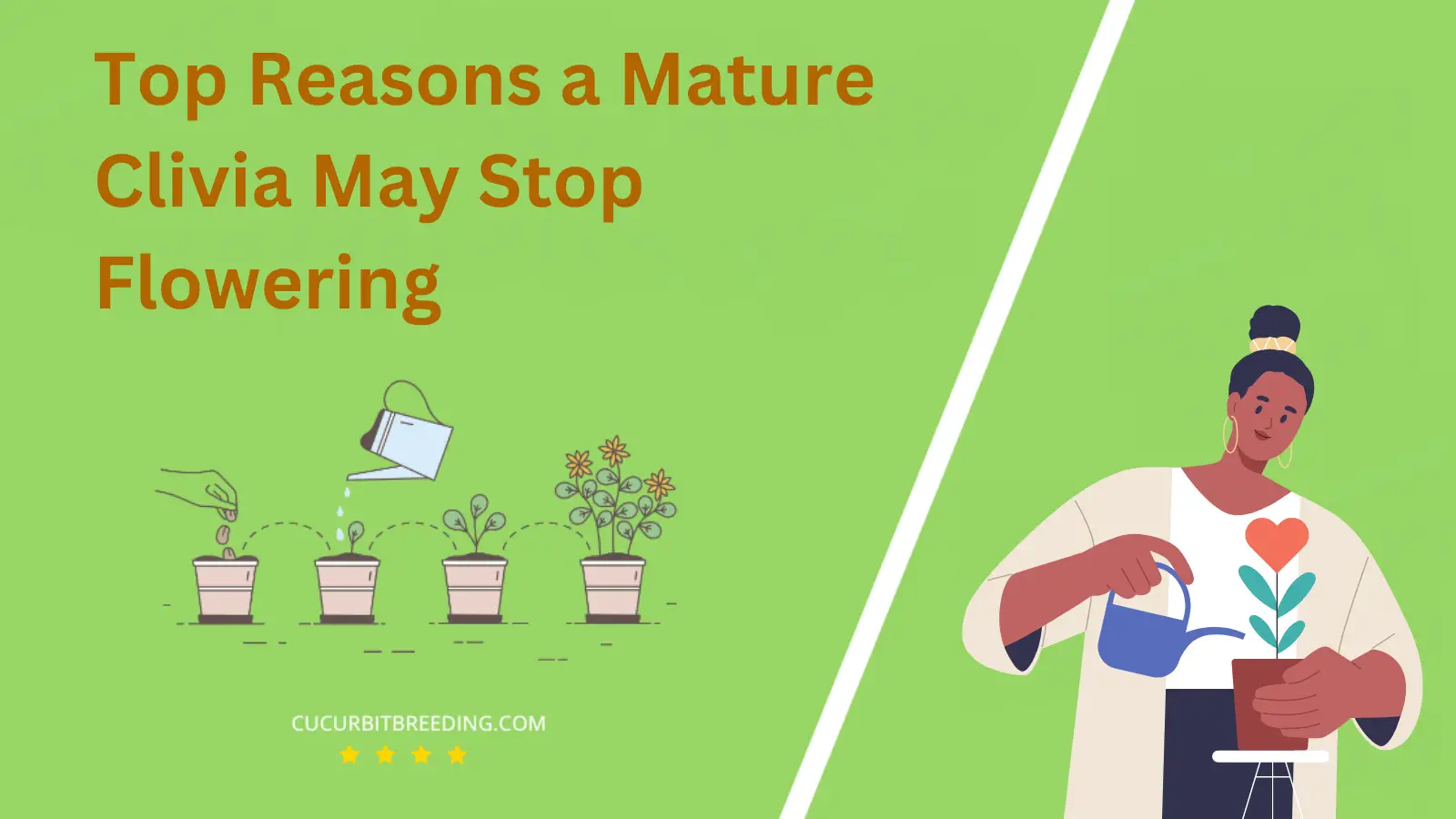
As a passionate horticulturist, you might have asked yourself, “When does Clivia bloom?” This exotic, captivating flower, native to South Africa, brings a vibrant burst of color to any garden or indoor space. Its intricate bell-shaped flowers and dark green foliage have made it a favored plant among many.
But understanding when and how it blooms can be quite a puzzle. This article aims to unravel this mystery and provide insights into the blooming cycle of this magnificent flower.
When Does Clivia Bloom?
Clivia, a popular houseplant, typically blooms between late winter and early spring. This flowering period can vary slightly depending on the specific variety and growing conditions. However, it’s important to note that Clivia requires a period of cool and dry dormancy in the fall for the bloom to be initiated.
| Stage | Description |
|---|---|
| Germination | Spring (March-April) |
| Growth | Spring (March to May) |
| Blooming | Spring (March – May) |
| Dormancy | (December to February) |
How Long Do Clivia Bloom?
Clivia plants typically bloom for a period of four to six weeks. However, the duration of their blooming period can vary based on factors such as their growing conditions and care.
How Light Affects Clivia Blooms?
Light has a significant influence on Clivia blooms. Clivia plants require bright but indirect light to produce vibrant flowers. Direct sunlight can harm Clivia, causing leaf burn. However, if the plant doesn’t get enough light, it may not bloom.
Furthermore, during the winter months, Clivia plants require a period of darkness to stimulate blooming. This should be a period of about five weeks with less light and cooler temperatures. After this period, moving the plant back into bright, indirect light can trigger blooming.
Will Clivia Bloom in the First Year You Plant It?
Typically, Clivia plants do not bloom in their first year after being planted. This is because Clivia plants usually take a few years to mature and produce their first flower. It’s important to provide them with the appropriate care and conditions to facilitate their growth and blooming process.
Will Clivia Bloom Every Year?
Yes, a healthy and well-cared-for Clivia plant will bloom every year. Clivia typically blooms in late winter or early spring. Providing it with a resting period of lower temperatures and less frequent watering in the fall can promote blooming. After the blooming cycle, Clivia should be fed and watered regularly in preparation for the next bloom.

Should I Deadhead Clivia Blooms?
Yes, you should deadhead Clivia blooms. Deadheading, or removing faded flowers, is an important step in caring for Clivia plants. This process helps to divert energy from producing seed pods back into the plant, encouraging better growth and future flowering. It also keeps the plant looking tidy and attractive. Use clean, sharp shears to cut the spent bloom at the base of the flower stalk to prevent disease spread.
Top Reasons a Mature Clivia May Stop Flowering

A mature Clivia may stop flowering due to several reasons. Insufficient light is the primary cause, as Clivias require bright, indirect light to bloom. If they do not get enough light, they may cease to flower.
Another common reason is improper watering. Overwatering or underwatering may stress the plant, leading to a halt in flowering. Clivias prefer a dry winter period and a moist summer period for optimal growth and blooming.
Inadequate fertilization may also be the culprit. These plants require a balanced diet to promote healthy growth and flowering. Lack of essential nutrients can cause the plant to stop flowering.
Lastly, temperature stress can be a significant factor. Clivias prefer cool temperatures to flower. If the temperature is consistently high, it may hinder the blooming process.